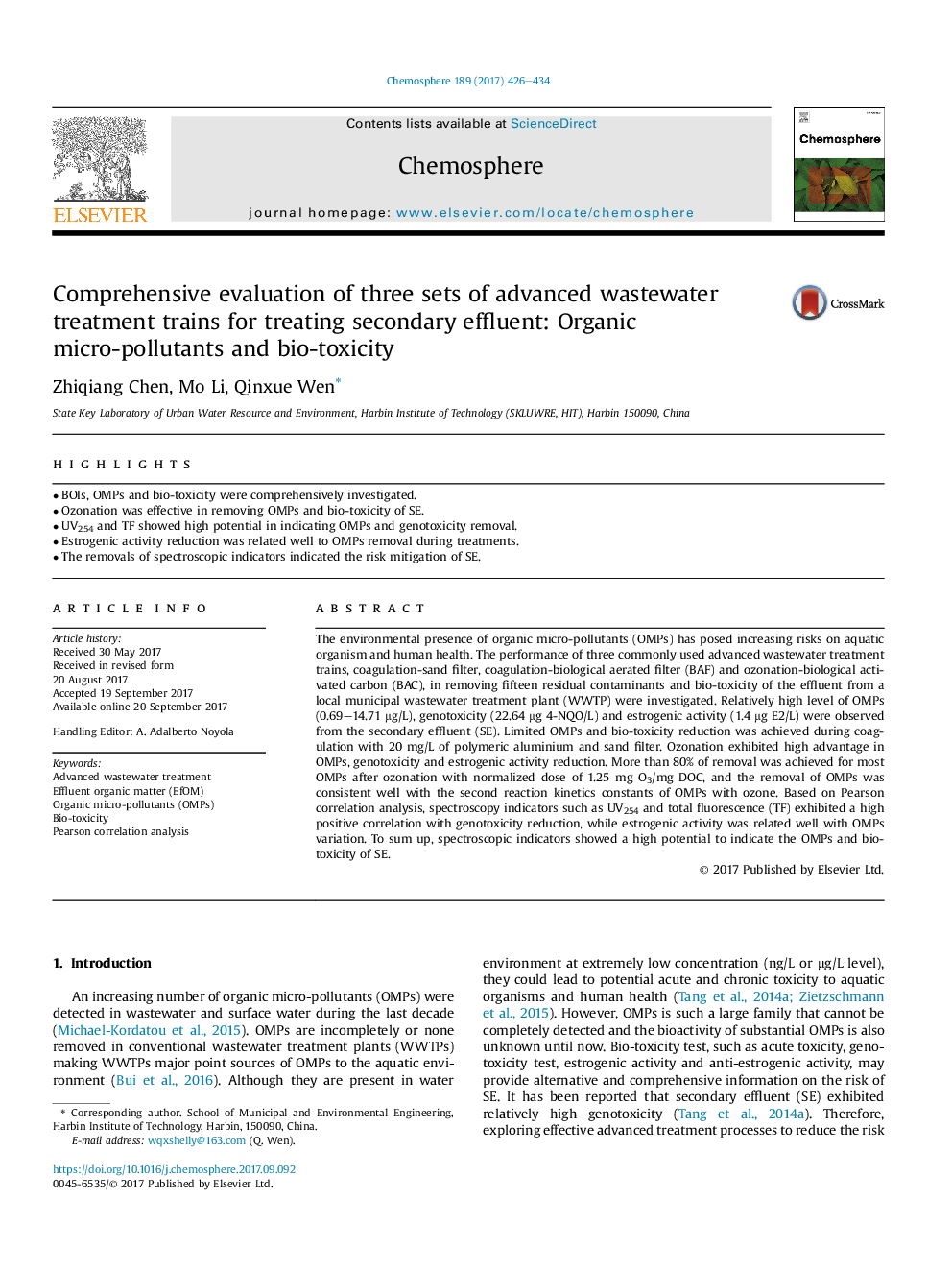| Article ID | Journal | Published Year | Pages | File Type |
|---|---|---|---|---|
| 5745923 | Chemosphere | 2017 | 9 Pages |
Abstract
The environmental presence of organic micro-pollutants (OMPs) has posed increasing risks on aquatic organism and human health. The performance of three commonly used advanced wastewater treatment trains, coagulation-sand filter, coagulation-biological aerated filter (BAF) and ozonation-biological activated carbon (BAC), in removing fifteen residual contaminants and bio-toxicity of the effluent from a local municipal wastewater treatment plant (WWTP) were investigated. Relatively high level of OMPs (0.69-14.71 μg/L), genotoxicity (22.64 μg 4-NQO/L) and estrogenic activity (1.4 μg E2/L) were observed from the secondary effluent (SE). Limited OMPs and bio-toxicity reduction was achieved during coagulation with 20 mg/L of polymeric aluminium and sand filter. Ozonation exhibited high advantage in OMPs, genotoxicity and estrogenic activity reduction. More than 80% of removal was achieved for most OMPs after ozonation with normalized dose of 1.25 mg O3/mg DOC, and the removal of OMPs was consistent well with the second reaction kinetics constants of OMPs with ozone. Based on Pearson correlation analysis, spectroscopy indicators such as UV254 and total fluorescence (TF) exhibited a high positive correlation with genotoxicity reduction, while estrogenic activity was related well with OMPs variation. To sum up, spectroscopic indicators showed a high potential to indicate the OMPs and bio-toxicity of SE.
Keywords
Related Topics
Life Sciences
Environmental Science
Environmental Chemistry
Authors
Zhiqiang Chen, Mo Li, Qinxue Wen,
